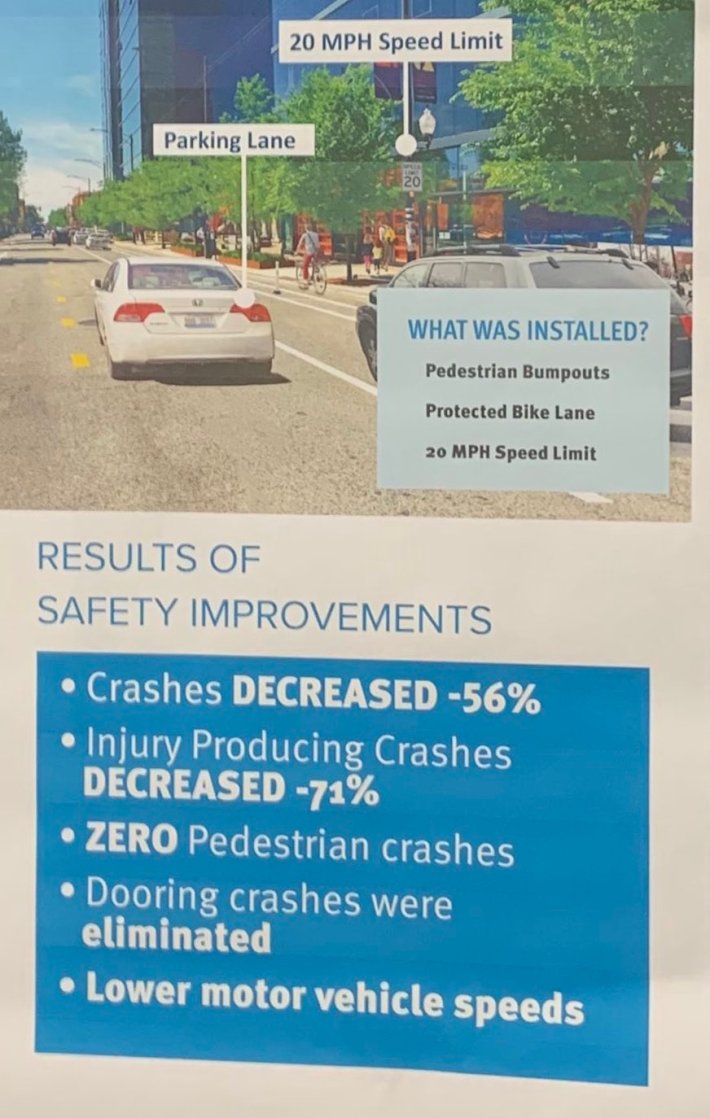Last Thursday the Chicago Department of Transportation held a Chicago Mobility Collaborative meeting at the Hamilton Park Fieldhouse in Englewood. Once there, attendees broke out into community tables. Each table had a QR code, allowing people to submit ideas for table topics and send them to the CMC leadership. CMC would then get together and select the best ones for the next meeting.
The ground rules for discussion, as posted during the meeting, were as follows:
- Listen actively to understand others’ views and perspectives
- One person speaks at the time
- Seek clarity, avoid making assumptions
- Be accountable for your words and their impact
- Your experience is valuable and unique, and it is worth sharing
- Provide constructive criticism of ideas and projects, not of individuals
Though each table had a different subject, they would all work towards the same goals.

“The goal of the Chicago Community Collaborative is to establish a forum for meaningful participation, where collaboration is encouraged, learning is facilitated, partnerships are fostered, and where Chicagoans have a voice in the decision-making that impacts them,” said Peter Taylor from Friends of the Major Taylor Trail.
One table focused on bus rapid transit, with participants talking about road requirements, such as bus lane design matters. They also talked about the necessity of providing good pedestrian access to BRT stations. In addition they looked at before-and-after examples of roads with BRT. For example, The Loop Link corridor on Washington Street in the loop features a protected bike lane, an "island" bus stop, a bus lanes, two mixed-traffic lanes, and curbside car parking.
Another table talked about the relationship between safe bike infrastructure and local businesses. Participants suggested helping merchants better appreciate the value of protected bike lanes through an interactive and educational approach, which could include taking surveys or providing data from existing PBLs that helps highlight their benefits for bike riders and businesses.

Another group was a walking tour that went around the surrounding area. Besides talking about the history of Hamilton Park and the surrounding neighborhood, the tour guide also pointed out the local safety infrastructure investments, and where the gaps were. For instance, despite plenty of Divvy bikes being available at local stations, the guide argued that there wasn't enough comfortable bike routes in the area to encourage people to use them. They also talked about how even though Englewood is a cohesive community area with a lot of history, the neighborhood is split into multiple wards, makes it difficult to create a cohesive transportation plan for the area.
“I heard some people talk about the protected bike lanes, whereas that was a challenge for people who have a business, and it’s taking up parking spaces, right?" said Pha’tal Perkins, founder of the group Think Outside da Block, which holds popular community bike rides, among other events. "And so when I think about how Englewood is set up where we advocated for protective bike lanes and different things to know that some of our barriers were that we have five different aldermen. That means on 63rd, we can have bike lanes where on 64th we can absolutely have the next alderman think something different than the alderman in a different ward."
Another table discussed barriers to walking, cycling, and other forms of active mobility. An unanimous agreement among the group was that the most significant barrier was the possibility of being struck by a driver. They also agreed that ways to fix the issue include physical barriers like concrete curbs, as well as non-police enforcement, such as deputizing the city’s citizens with the 311 app or having a team run by CDOT that would be able to write tickets for driving and parking violations.
All in all, the CMC meeting was an event where attendees could share diverse perspectives on traffic safety matters in a constructive way.

Did you appreciate this post? Please consider making a tax-deductible donation.





